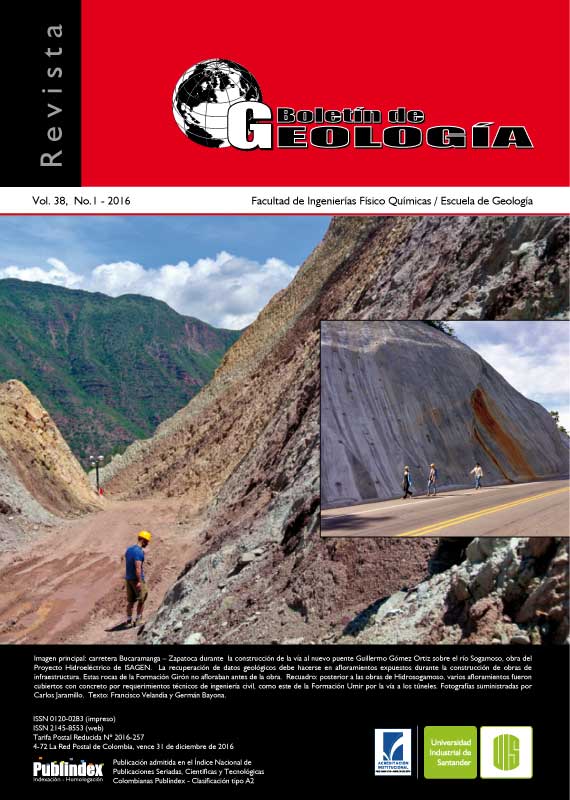PALEOSEISMIC ASSESSMENT OF THE SAN FELIPE SEGMENT OF THE BOCONÓ FAULT (NORTHWESTERN VENEZUELA): RESPONSIBLE FOR THE MARCH 26TH, 1812 EARTHQUAKE?
Published 2015-12-04
Keywords
- Boconó fault,
- paleoseismicity,
- historical seismicity,
- Caracas 1812 earthquake,
- fifty-year rain
- Yaracuy valley ...More
How to Cite
Altmetrics
Abstract
The Boconó Fault (BF), a major tectonic feature of the current transpressive plate boundary zone between the Caribbean and South America, exhibits a large number of Quaternary strike-slip landforms on its northernmost sector (Boc-e), along the NW edge of the Yaracuy tectonic depression. Two paleoseismic trenches, excavated in the vicinity of Yaritagua (El Salto) and Quigua, close to the cities of Barquisimeto and San Felipe respectively, in 2005, not only confirmed the Holocene activity of the BF in this fault portion, but also allowed the ascription to BF of the historical destructive earthquake of March 26th, 1812, which appears to have had two intensity centers: one offshore meizoseismal area WNW of Caracas; and the other one between Barquisimeto and San Felipe, at the foothills of the Aroa range, in the fault portion under study. An organic-rich filled open crack at El Salto trench, whose 14C age is younger than 1770 AD, is the evidence to this earthquake. On the other hand, Mw ≥ 7.0 earthquakes on the BF at Quigua recurs every 2000-3000 years. It is thought that present-day deformation along and across Boc-e may be accommodated by a wider zone.
